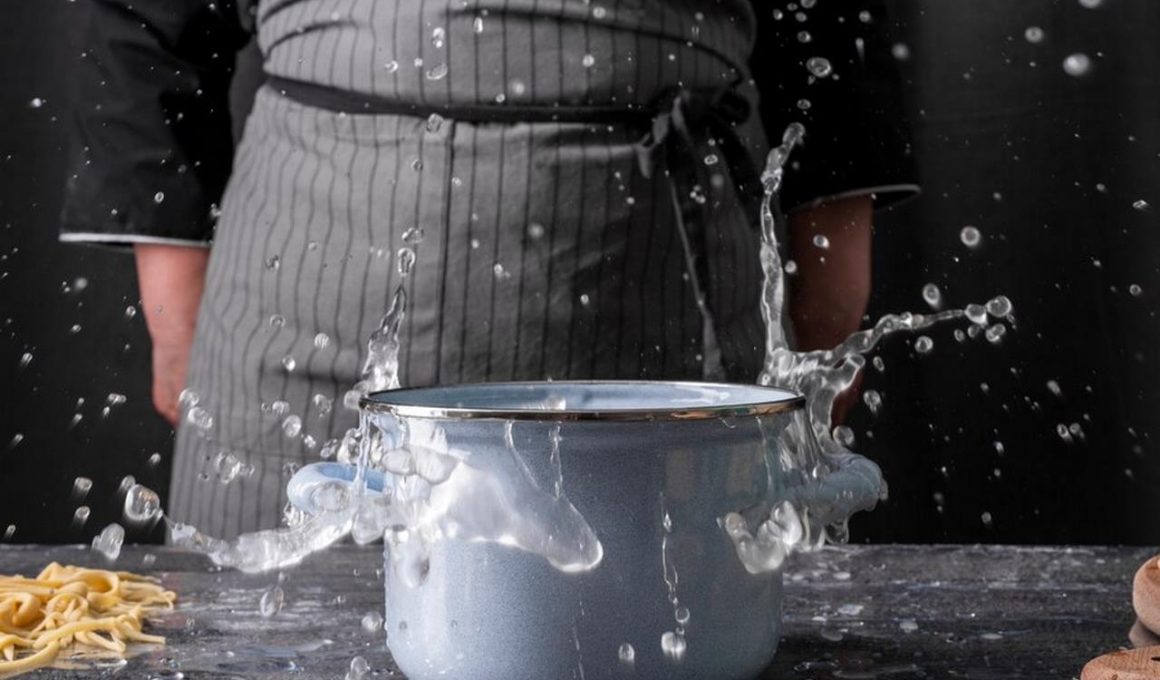When cooking rice at home, it’s essential to know how to cook it properly. There are some simple rules to follow, such as using a timer and using a lid. You’ll also need to wash the rice before you begin cooking it. Listed below are the most important steps to follow when cooking rice. Follow these steps to ensure that your rice is perfectly cooked every time. Also, be sure to follow the cooking time in the recipe!
Using a timer
The best way to prepare rice is to set the timer on the rice cooker before you start cooking. By doing this, you can prepare your rice at the time you prefer. Some rice cookers have a built-in timer and you can program it to be done in a specific amount of time. However, if you do not want to interrupt your cooking, you can set a delay timer.
The rice cookers with timers have other functions as well. In addition to cooking rice, you can cook soup, chili, or other grain dishes using the cooker. These appliances usually feature six presets that are ideal for cooking different types of rice. Some even feature a steaming function, which lets you cook rice without letting it overcook. You can also set a ‘keep warm’ option to keep the rice warm after cooking.
Choosing the right cooking time is important when it comes to the quality of rice. Some cooks prefer their rice cooked for at least 10 minutes. However, if you care about the texture of the rice, you may want to leave it a little longer. Some rice cookers have a special “quick-cook” setting that can be used to save time. The downside to this feature is that it can result in overcooking or burning the rice. Using a timer to cook rice can help you get the perfect result every time.
Using a pot
When cooking rice, it’s important to choose a pot with a good lid. The right lid will hold in moisture and steam while the rice cooks, so the rice turns out fluffy and delicious. Look for a lid with a vent hole to release excess moisture as the cooking pressure builds. Some pots have glass lids, which can help you monitor the cooking process and prevent soggy rice. There are also pots with stainless steel interiors.
The water level in a pot should be around the top joint of the index finger. Make sure to add more water if the rice is not fully covered. This will prevent the rice from becoming soggy and reduce the likelihood of it rattling or burning. After the rice is cooked, allow it to rest for 15 minutes before fluffing. Using a pot to cook rice is one of the most popular ways to prepare rice.
To cook rice in a pot, you need to measure the right amount of water. The basic rule is that you need two cups of water for every cup of rice. You should also add one teaspoon of salt to every cup of water. Once the water is boiling, lower the heat. The rice should be cooked for around 45 minutes before it is tender. After the cooking time, remove the pot from the heat. It should be covered while simmering.
Using a lid
The use of a lid for rice cooking is beneficial to the preparation of healthy, delicious dishes. Without the lid, the cooking process is not uniform and the rice will be undercooked. Additionally, the excess water will escape as vapor faster than the rice can absorb it. Additionally, when you cook rice without a lid, the natural foaming of starchy water can spill over. As a result, your rice may end up looking like a watery, unappetizing pot of porridge.
While cooking rice with a lid, keep in mind that the amount of moisture in the rice will also depend on the type and brand of rice. Excess moisture will lead to a separate rice that will not separate properly after draining. If you prefer to eat rice with chopsticks, you should avoid rinsing it. Rinsing removes the starch that makes rice stick together. When cooking rice, keep in mind that a lid can add more moisture to the cooking process, so that you can avoid this.
Besides using a lid, you can also use a casserole dish or a deep-sided pot that has a lid. These two alternatives are more convenient than open-top pots and give you more control of the cooking process. Moreover, they can help you avoid the soggy rice caused by the overheating of rice. And last but not least, using a lid will prevent the rice from getting soggy.
Washing rice
Washing rice before cooking helps to retain more micronutrients and decreases the levels of arsenic. It also cuts down cooking time and increases the amount of water available. However, rinsing rice is not necessary for American-style enriched rice. Regardless of how you wash your rice, you should avoid soaking it in water longer than necessary. Here are some reasons why. Read on to learn more about the benefits and risks of washing your rice before cooking.
Washing rice before cooking is important because it can cause the grain to develop a foul odor. If the rice is not washed, it will smell bad and spoil faster. The Guardian recommends rinsing the rice under cold water and gently swirling the grains. Some food websites recommend pouring cold water over the rice while some others recommend placing the grains in a strainer and running cold water over them. In either case, the runoff will look murky at first, but it will clear up.
There are several reasons why washing rice before cooking is so important. Natural rice contains impurities and should be thoroughly washed before use. Furthermore, white rice contains a fine dust called polished rice that can make it sticky. After washing, rice should be stored in a dry place to avoid bacteria growth. Do not store rice in plastic bags. You can use a reusable jar for storing rice. It does not need to be refrigerated to stay fresh.
Using a 1:1 water to rice ratio
One of the biggest misconceptions in cooking rice is that a 1:1 water to white rice ratio is the correct one. Despite the name, this ratio does not actually work. This ratio results in rice with undercooked insides. According to chef-consultant Hiroko Shimbo, it’s not the right one for fluffy, well-flavored rice. In fact, the correct ratio should be one cup of water minus two tablespoons of rice. In addition, it’s essential to pre-rinse and dry rice to remove any excess starch.
When cooking rice in a rice cooker, it’s crucial to use the correct ratio of water to grain. This can be confusing, but the general rule is that you should add two cups of water for every cup of rice. However, this rule is not strictly adhered to, so be sure to check your instructions carefully. In addition to being easy to follow, it will also save you time and money in the long run.
If you’re using long-grained white rice, a 1:1 water to rice ratio will work just fine. You can use a small saucepan to add two cups of water to one cup of rice. Stir the rice occasionally to break up any clumps and make it cook more evenly. If you’re cooking for smaller quantities, you may need to adjust the water to rice ratio a little.
Using a steamer
You can use a rice steamer to make brown, red, or white rice. Some steamers have a dedicated button for cooking rice. Before cooking rice, wash it well and drain the water. Then, fill the steamer with enough water to cover the rice by about one-half inch. Once it reaches the desired moisture, add the rice and cover it tightly with a lid. Cook for approximately 20 minutes, or up to 33 minutes if you need a more tender rice. If you don’t want your rice to become soggy, leave it in for another two or three minutes.
Using a steamer is the easiest way to cook rice. The rice steamer compartment has a perforated bottom. The perforations in the bottom allow the rice to release trapped steam. Pour in the water to the maximum level of the steamer. Set the timer and start cooking. Using a steamer for cooking rice will cook your rice at a perfect consistency. It doesn’t matter if you are using brown or white rice. The timing is similar for all types.
While the steamer requires more time, it also cooks rice at a consistent temperature. Using a steamer is better for cooking rice that needs to be cooked quickly. The steamer cooks rice at a temperature close to that of water. This is beneficial for cooking rice when you don’t want the rice to get too soft or dry. The steamer may also be better for cooking vegetables and fish in addition to rice.
Using a steamer basket
If you don’t have a rice cooker, there are a few simple steps you can take to ensure your rice is cooked to perfection. Before you start cooking your rice, make sure you rinse it well and drain it. When you begin the cooking process, fill the steamer with cold water but make sure the water doesn’t boil. Turn on the steamer and cook the rice for about 20 minutes. Be sure to cover the steamer as it cooks so that the rice doesn’t burn or catch on the bottom. When the cooking process is complete, remove the steamer and let it sit for about five minutes. Once it’s cooked, you can serve it immediately or store it in a bowl to keep warm.
The best steamer baskets are made to accommodate all types of rice, including brown, red, and white. Some have push-button settings that allow you to cook different types of rice at varying levels of moisture and steam production. Ensure that the water level in your steamer is below the level of the basket to keep it from overcooking. When using a rice steamer, make sure to use a tight-fitting lid. If you don’t have a steamer basket, you can use a vegetable steamer instead. If you don’t want to spend money, you can use a Chinese bamboo or metal steamer with the same method.
Podobne tematy




